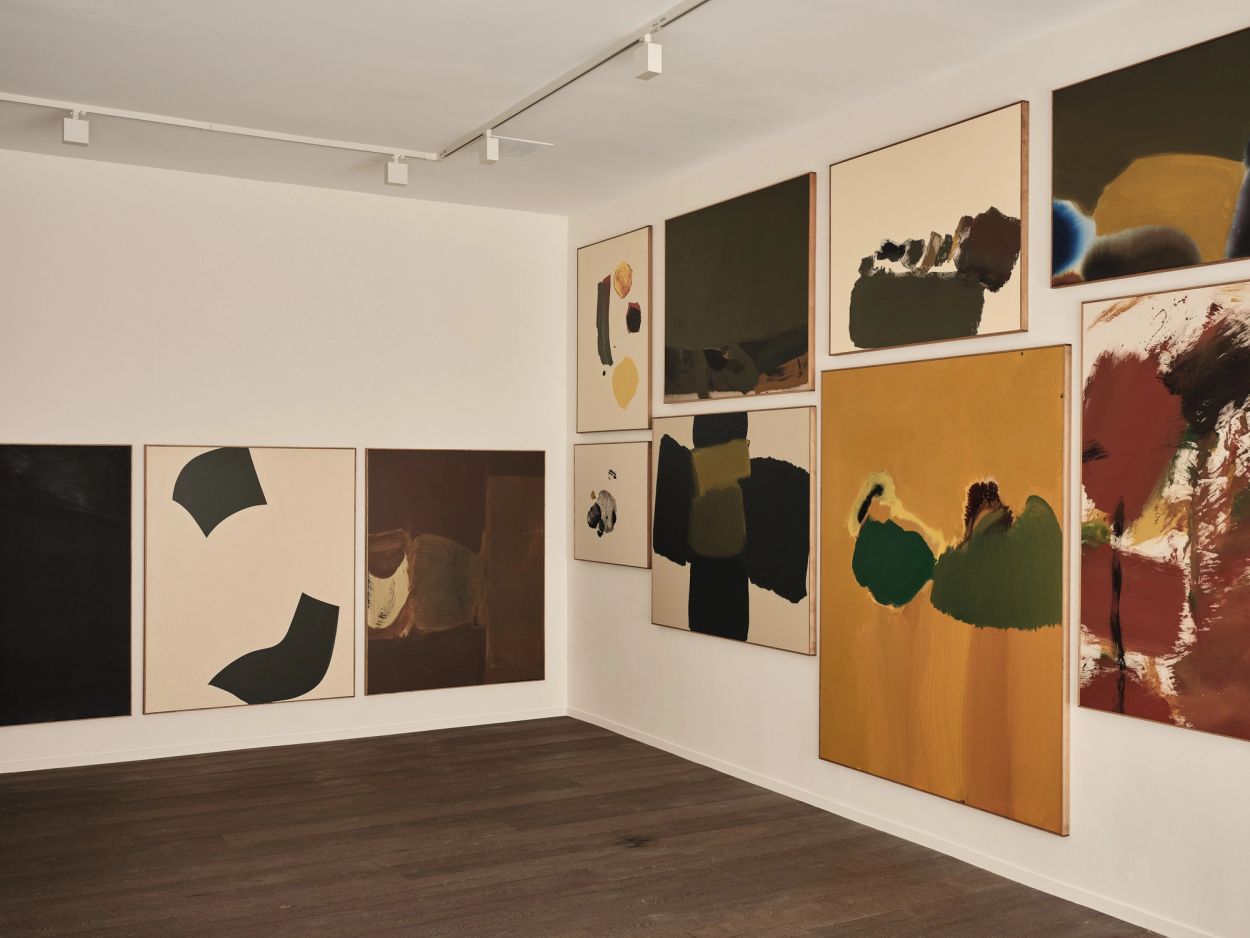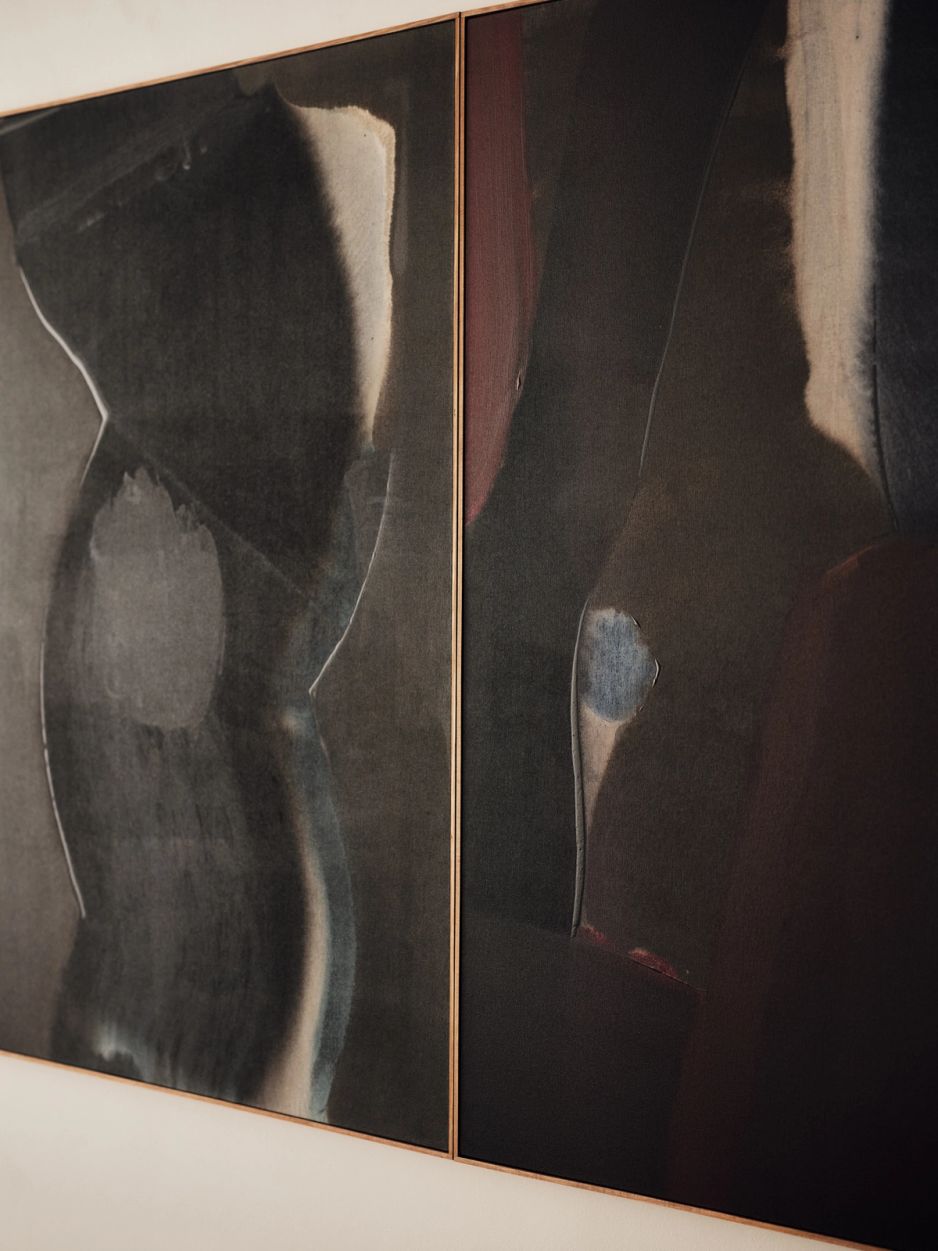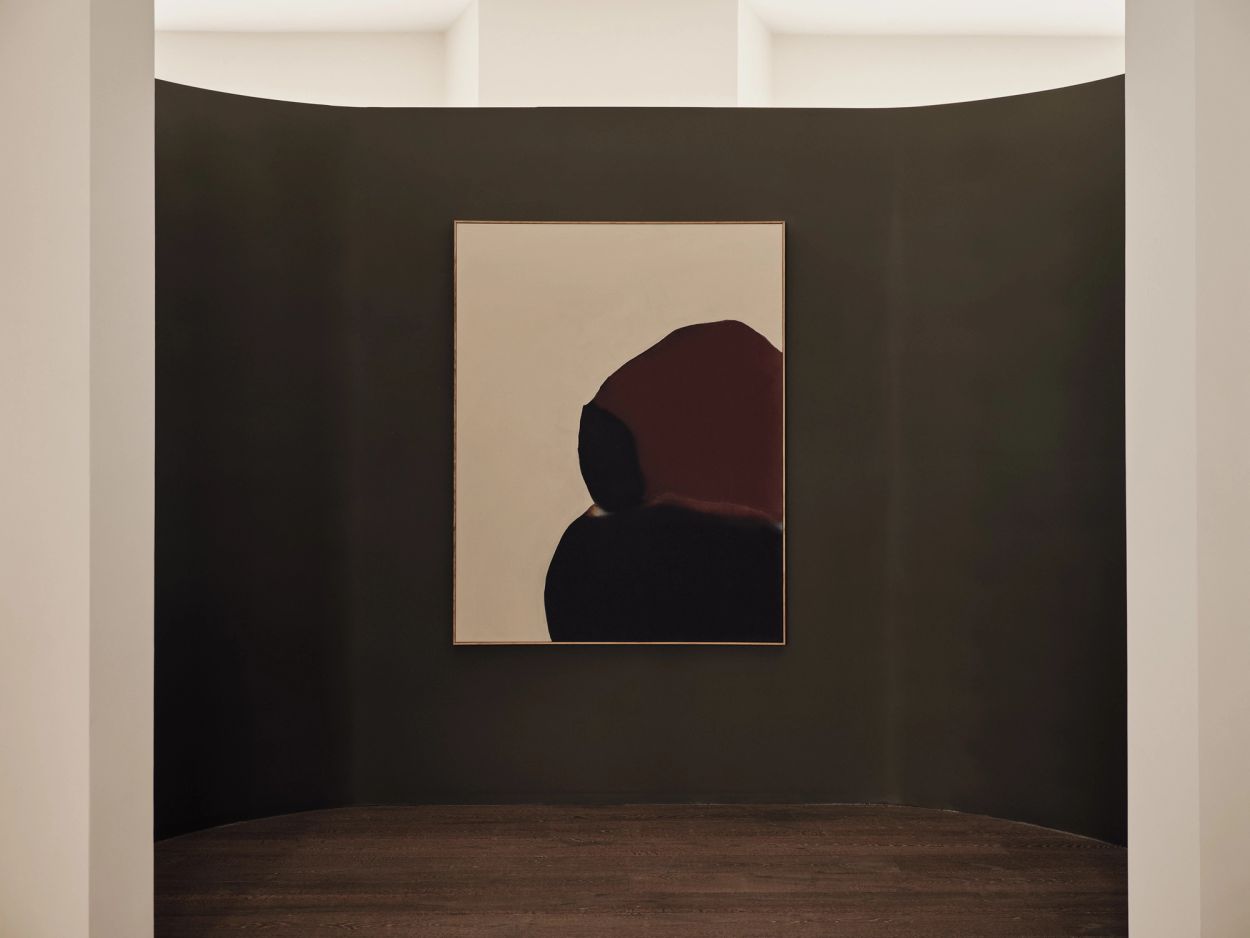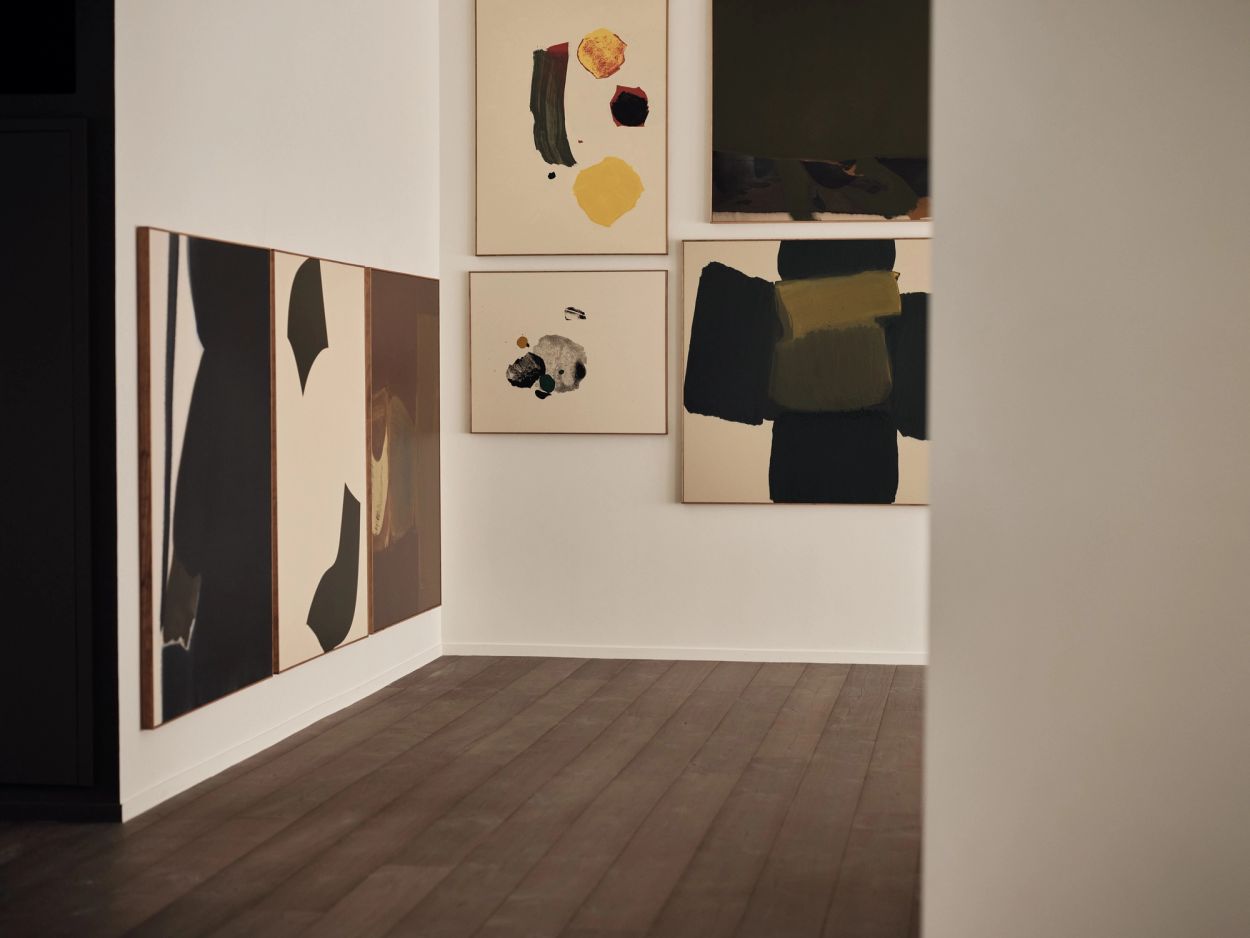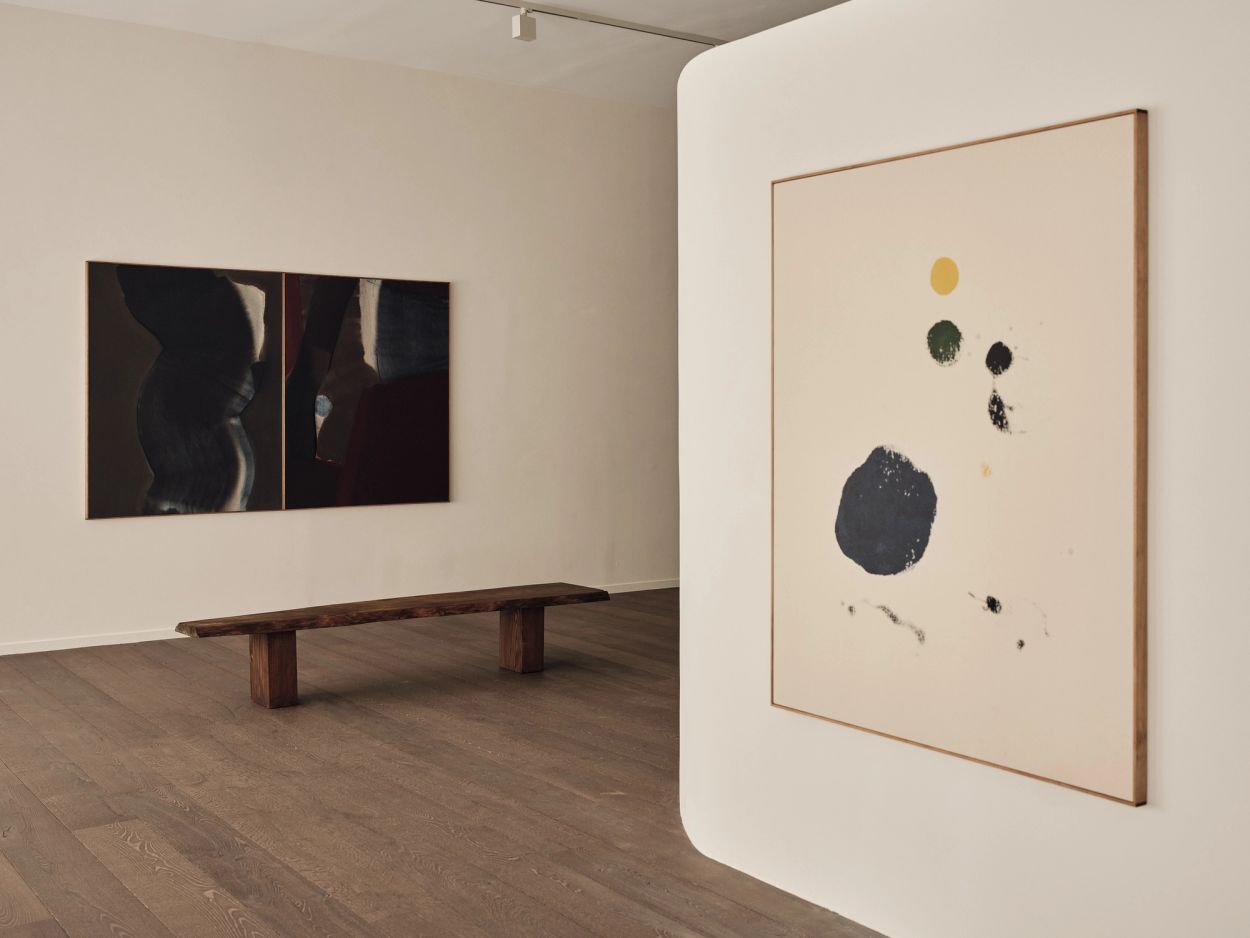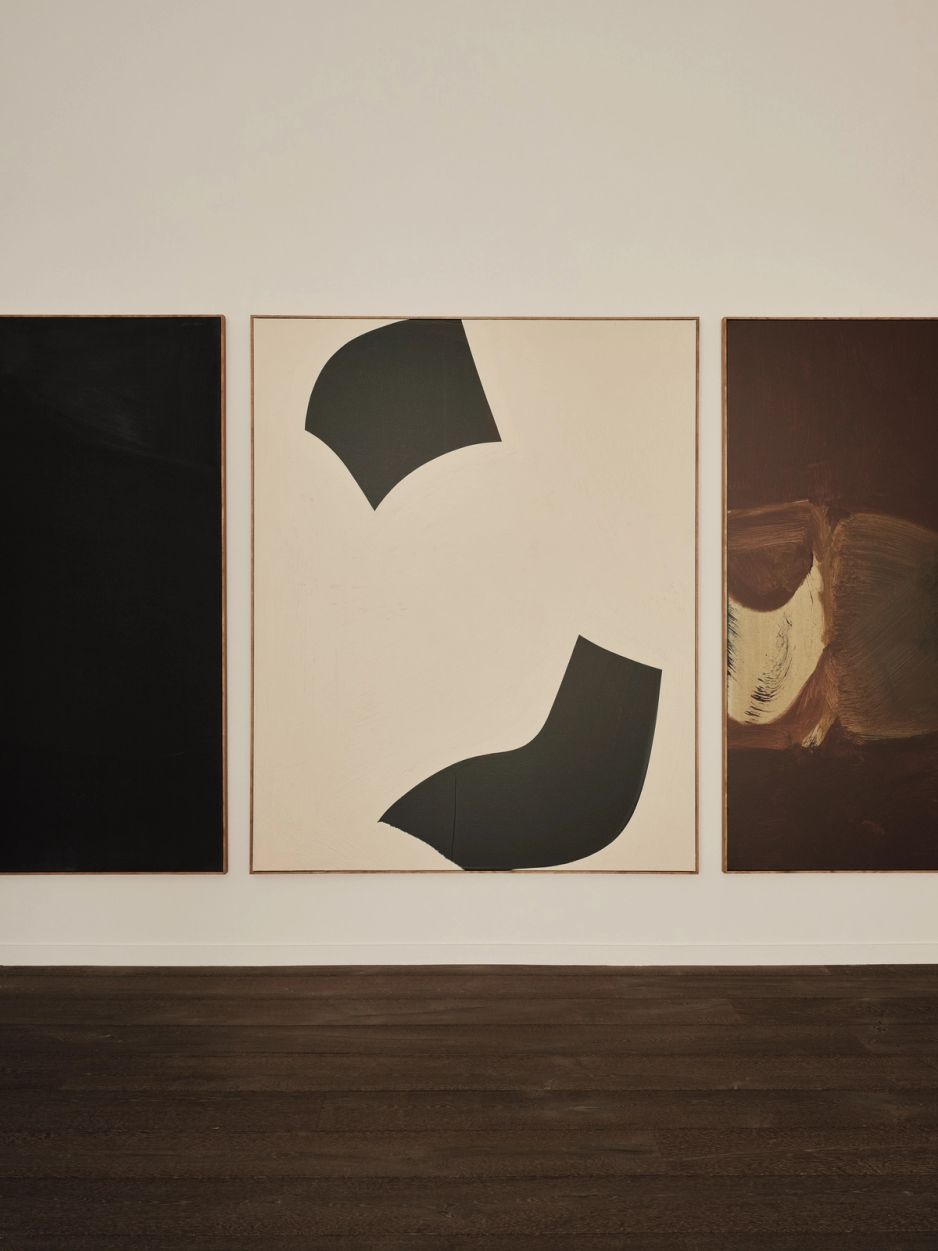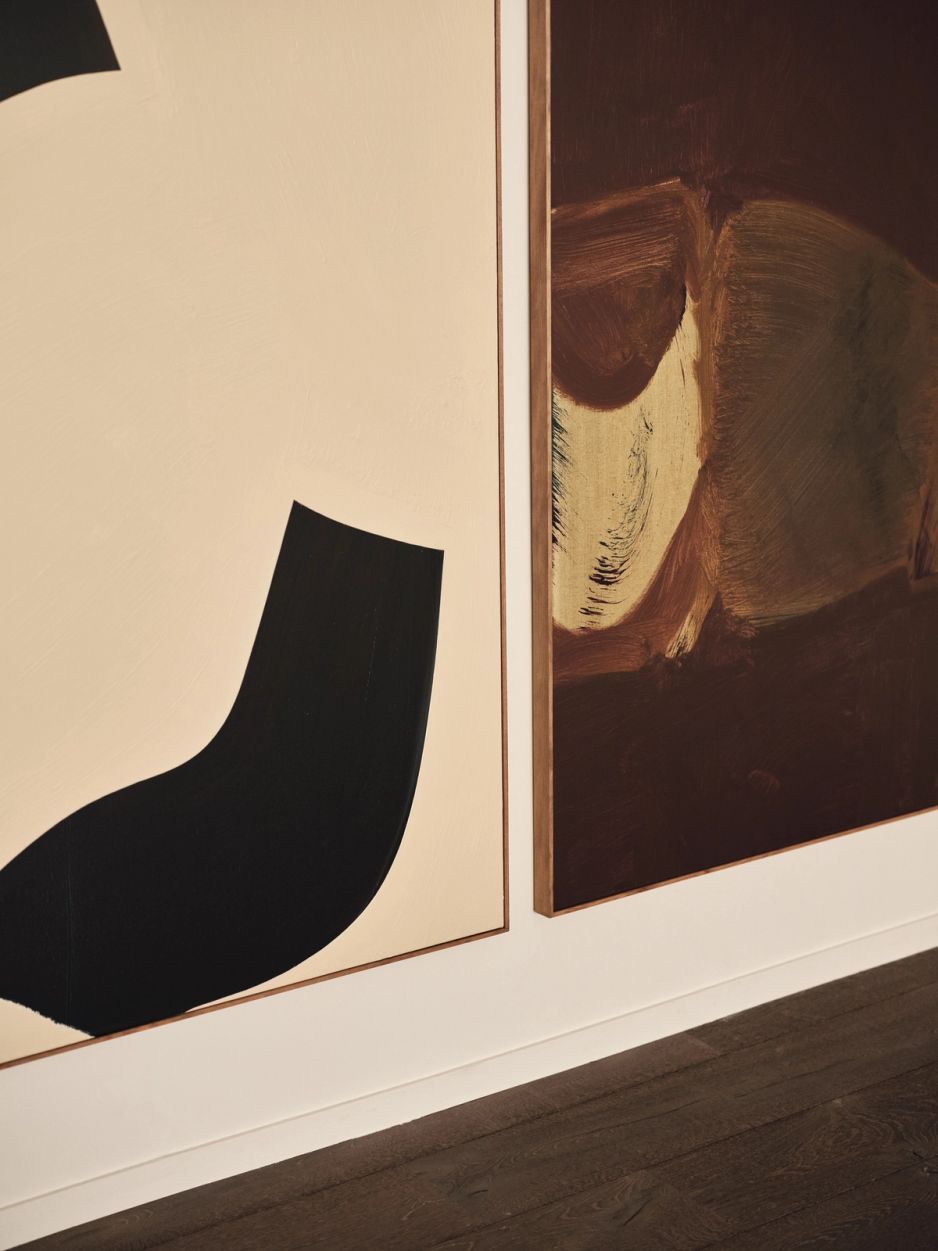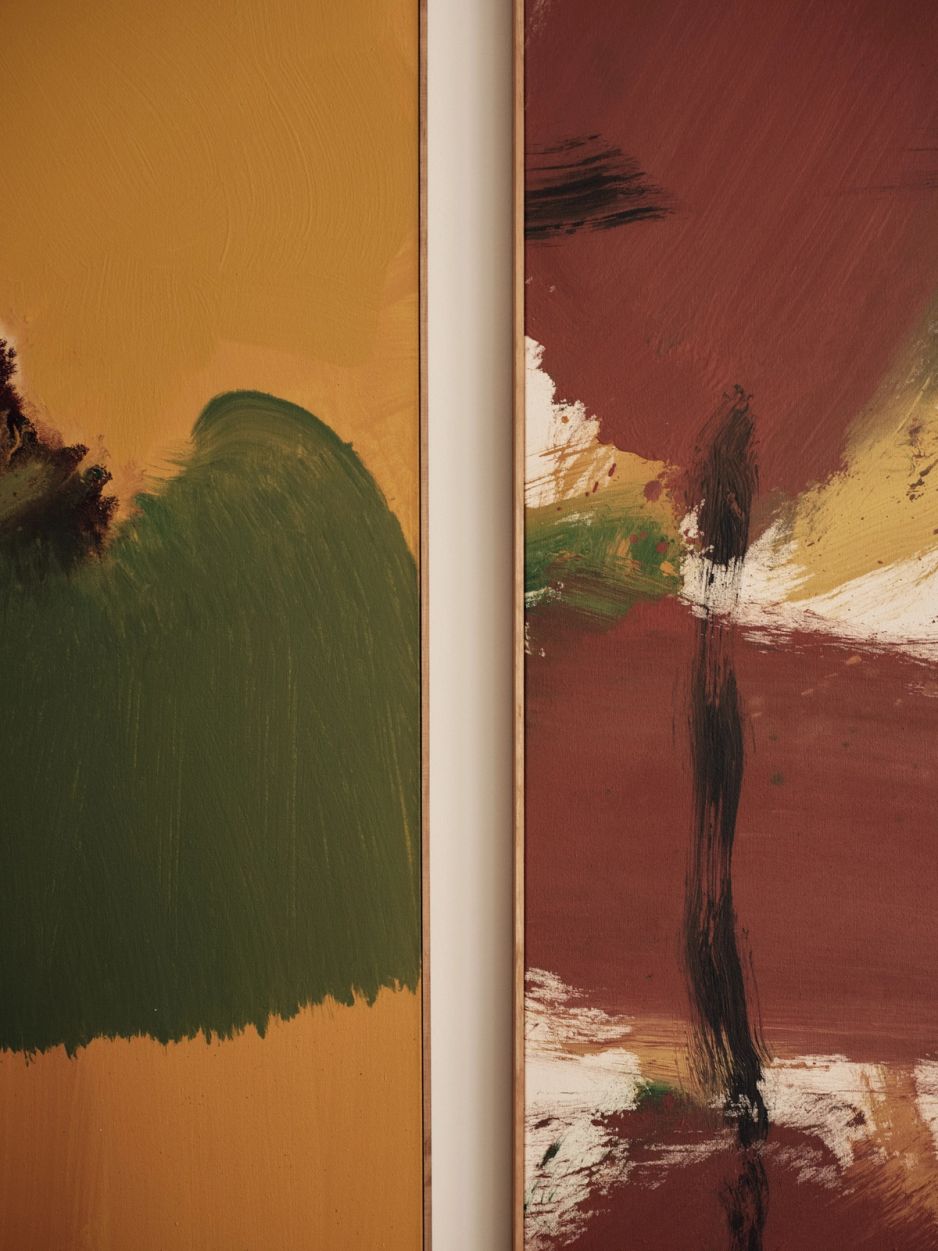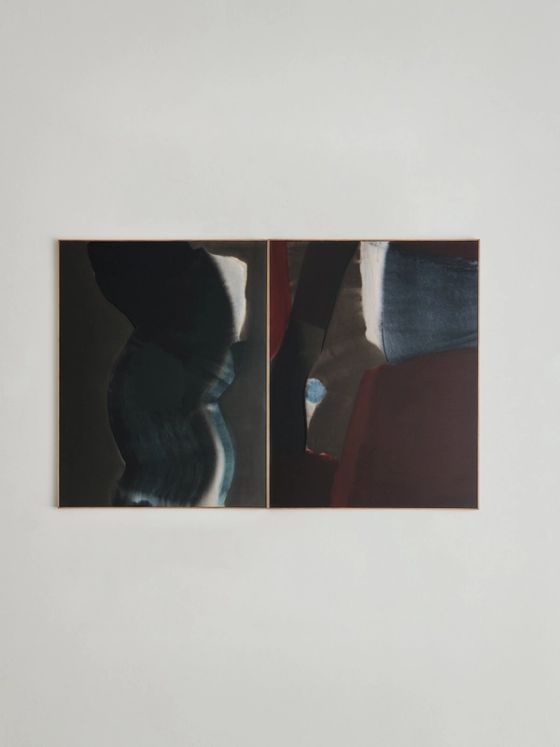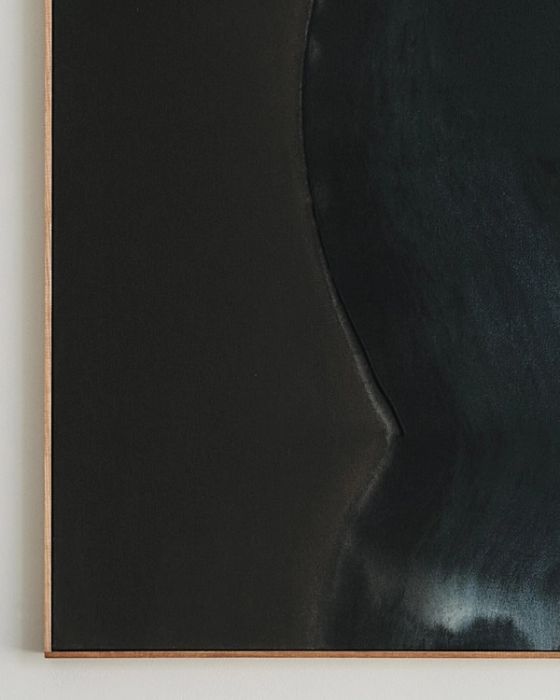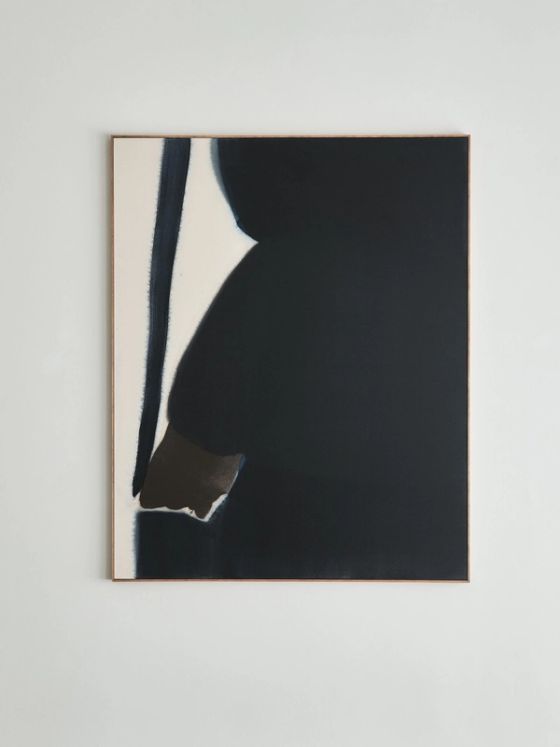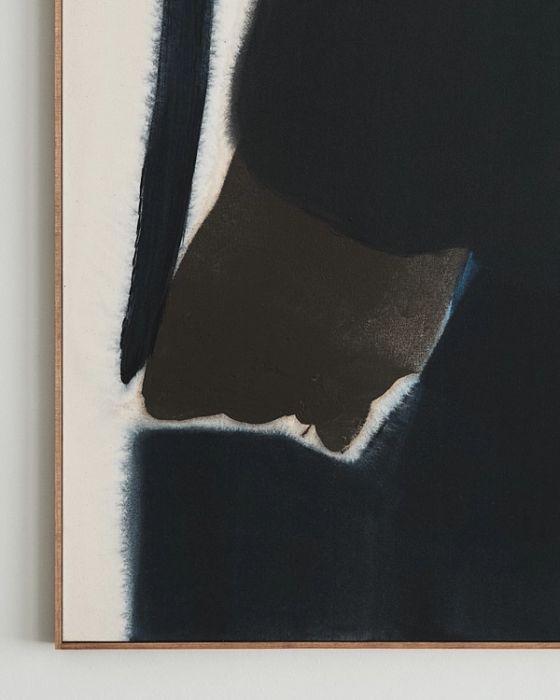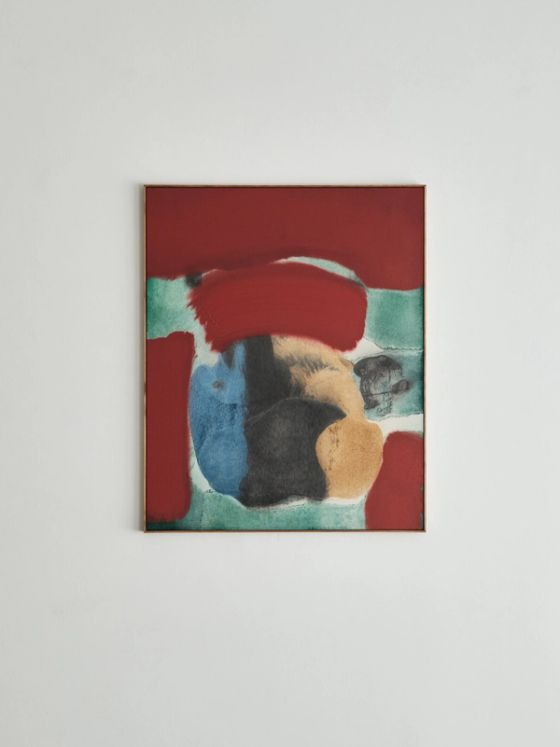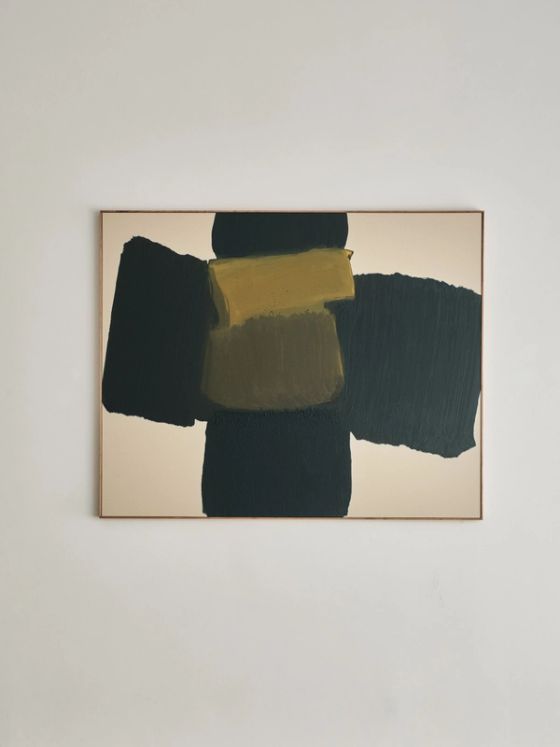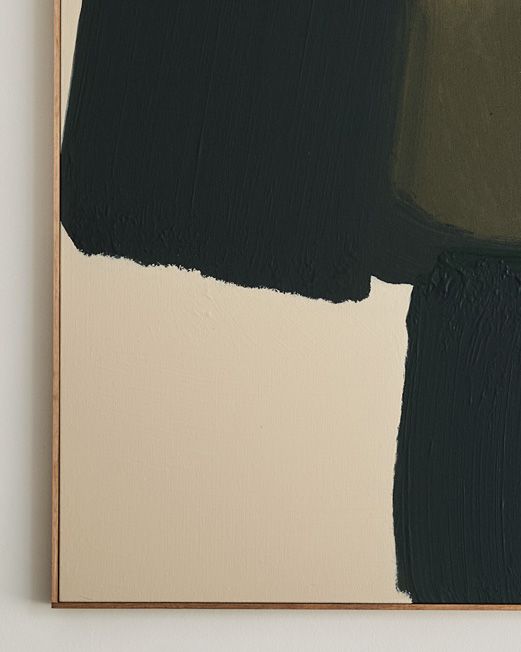Jean-Baptiste Besançon: Cadere Apr 7 – Jun 24, 2023
In Cadere, Jean-Baptiste Besançon continues his exploration into formal, abstract painting. Besançon’s practice is full of conscious contradictions; he allows chance occurrences in the creation of his paintings to inform his research, leading to an ongoing process of material experimentation and discovery.
Making use of a limited palette of saturated yellow and brown ochre, contrasted against deep blues, greens and burgundy, the compositions are often graphic, and activated by fragmented shapes, textures and negative space. Some colours are kept in separate blocks with the precision of a screen print, while others bleed at the edges, overlapping and coalescing.
Besançon lays his canvases horizontally while he works, raised slightly above the ground. Paint is applied and washes are used to remove brush strokes and cede control to the material elements of the work. “I always want to make the best painting with the least movement possible,” he says. Choosing not to impart meaning on the completed paintings, Besançon also cedes control to the viewer: each work is titled simply with a number, denoting the scale of the piece, and allowing the viewer to experience the painting unburdened.
As a recent extension to this approach, Besançon has begun to paint on rolls of unstretched canvas, allowing the eventual size of the painting to be determined by the act of making. After painting, he often makes cuts to zoom in to a specific part of the composition, to “reorganise the painting, with the painting already painted,” while leaving open the possibility of working again on the surface after the crop has been made.
Besançon’s process allows his practice a balance of serendipity and control. Without holding an image in mind when he begins each work, a completed painting is something to be discovered through action. Often one experiment will lead to further investigations into other details and methods of applying paint. “I don’t consider painting to be an exercise that has to be executed like a robot,” he says. “As my life changes, so my paintings have to change too.”
Words
- Travis Riley
Photos
- Rich Stapleton
Featured works
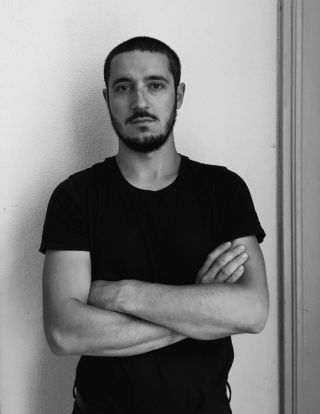
To be in contact with the canvas can be “a fight” for Besançon, evoking strong emotions and “strange sensations”. His practice is not a direct response to personal events, and he avoids offering a rigid framework in which the art should be understood, preferring to contextualise painting as its own language.
Related exhibitions

Jean-Baptiste Besançon’s solo show at Francis Gallery, titled The Blue Hour, exhibits the Bordeaux-based painter’s work for the first time in the UK. The title refers to the period of twilight that occurs each morning and evening, where there is neither daylight nor complete darkness.
